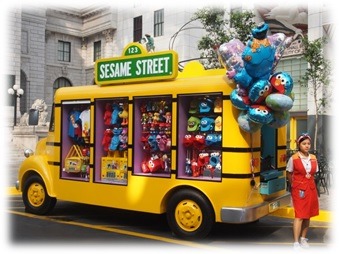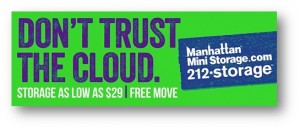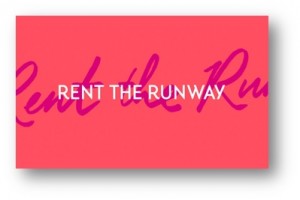 As the guy who helps put together our “Radio’s Most Innovative” series, Mike Stern has learned a great deal about innovations and the people who bring them to market over these past several months. In today’s guest post, he shares some fascinating tips from a recent Fast Company article about innovators about brilliance well outside the media industry. Maybe it will inspire you. – FJ
As the guy who helps put together our “Radio’s Most Innovative” series, Mike Stern has learned a great deal about innovations and the people who bring them to market over these past several months. In today’s guest post, he shares some fascinating tips from a recent Fast Company article about innovators about brilliance well outside the media industry. Maybe it will inspire you. – FJ
I really enjoy helping create our weekly “Radio’s Most Innovative” blog posts which recognize the biggest innovations – both old and new – in the radio industry. We can definitely learn a great deal from these people. However, it’s also important to look outside of our industry, and examine innovations from other businesses for ideas or lessons that might apply to our world.
Unfortunately, that can be hard to do. If you set out to read up on innovation, you’ll find tons of information, much of which isn’t relevant to the radio business. That’s why this Fast Company article that revisits 13 of their best stories about innovation from 2014 is such a great read. The topics range from Sesame Street to dry cleaning to real estate development. And while not every article is relevant to radio, several stories had takeaways worth noting.
I now know how to get to Sesame Street. The answer is research.
 Carol-Lynn Parente, SVP of Content and executive producer at The Sesame Workshop, is the person who oversees this amazing franchise. Because Sesame Street is a connection to a more innocent time in life for so many, finding ways to evolve the show without offending previous generations of devoted fans can be difficult. (Doesn’t this sound just like the challenges faced by any number of radio formats?)
Carol-Lynn Parente, SVP of Content and executive producer at The Sesame Workshop, is the person who oversees this amazing franchise. Because Sesame Street is a connection to a more innocent time in life for so many, finding ways to evolve the show without offending previous generations of devoted fans can be difficult. (Doesn’t this sound just like the challenges faced by any number of radio formats?)
To guide the brand, Parente’s team meets with families of preschool children regularly to discuss the issues they confront. Some of these, like the childhood obesity epidemic, are easier to address, while others such as AIDS or parents in the military are more challenging.
What makes the research that Sesame Street conducts different from most radio surveys is the focus on the viewer and not the show. They aren’t trying to find out what people think about a particular segment nor are they getting ratings for individual characters. Instead, they are searching for relevant topics to address; something we rarely ask the audience about, but that would surely help focus our on-air content if we did.
 Storage units aren’t a business where you’d expect to find a lot of innovation until you see some of the ads Archie Gottesman, the chief branding officer of Manhattan Mini Storage, has created.
Storage units aren’t a business where you’d expect to find a lot of innovation until you see some of the ads Archie Gottesman, the chief branding officer of Manhattan Mini Storage, has created.
Their long-running outdoor and direct mail campaigns feature copy that is always topical and often controversial. Previous ads have included political issues (“If you don’t like gay marriage, don’t get gay married”), inside jokes for New Yorkers (“Remember, if you leave the city, you’ll have to live in America”) and even struggling sports teams, (“Why leave a city that has six professional sports teams, and also the Mets?”)
As you can see, Manhattan Mini Storage’s marketing stands out – an important part of the marketing effort.
But it goes beyond that. Gottesman says she views the ads as “a long-term, ongoing conversation with New Yorkers,” and is always looking for “cultural topics that New Yorkers are currently discussing.” What a great way for a radio station to view its audience interactions. That’s a great filter to use for everything from show content and social media posts to contests and email newsletters: an ongoing discussion with the audience.
 Rent the Runway is a unique service that rents out designer dresses women can wear to events at a fraction of their retail price. However, the Fast Company article didn’t focus on their innovative business model or how the service has grown. Instead, they looked at the least glamorous part of Rent The Runway’s business: dry cleaning the garments after they are returned.
Rent the Runway is a unique service that rents out designer dresses women can wear to events at a fraction of their retail price. However, the Fast Company article didn’t focus on their innovative business model or how the service has grown. Instead, they looked at the least glamorous part of Rent The Runway’s business: dry cleaning the garments after they are returned.
According to the piece, talented “spotters” – people trained in how to get difficult stains out of delicate fabrics — are apparently hard to come by. Even after poaching some of the best “spotters” from other high-end dry cleaning operations, the company still didn’t have enough people to handle their high volume business. If that sounds at all like the radio talent pool everyone grouses about, that’s because the two are similar.
So the fascinating part is Rent the Runway’s solution: a journeyman program open to any employee who wants to learn the trade. It requires nearly two years and includes both instruction and on-the-job training. It’s an expensive but important investment for Rent the Runway. It’s also a concept – commitment to cultivating talent — that aside from Dan Vallie’s National Radio Talent System seems to always elude radio. And they’re doing it from within.
The final article in this Fast Company collection isn’t about one company in particular, but instead focuses on a trend among real estate developers who want to accelerate the pace of gentrifying up-and-coming neighborhoods. To get people accustomed to spending time in these growth areas, they are throwing parties and other events hosted by unique, cutting-edge personalities. As the article says, what better way to raise awareness than to “throw a bangin’ party each week?”
 One such location, known as Industry City, is managed by Andrew Kimball, the former CEO of the Brooklyn Navy Yards. Kimball realizes he’s leveraging artists and other performers to create a unique buzz that can’t be derived from other forms of advertising. It makes you wonder if cash-strapped stations without marketing budgets couldn’t pursue a similar strategy of developing mutually beneficial relationships with local tastemakers to further brands and attract new listenership.
One such location, known as Industry City, is managed by Andrew Kimball, the former CEO of the Brooklyn Navy Yards. Kimball realizes he’s leveraging artists and other performers to create a unique buzz that can’t be derived from other forms of advertising. It makes you wonder if cash-strapped stations without marketing budgets couldn’t pursue a similar strategy of developing mutually beneficial relationships with local tastemakers to further brands and attract new listenership.
Take the time to read through some of the other pieces the article recommends. I didn’t even touch on the value of A/B testing for lingerie sales or how words like “epicness,” “Twitter hashtag,” and “Hell no” made their way into the New York Times Crossword.
And if these articles lead you to insights, please share your epiphanies below in the comment section. In the meantime, we’ll be back with our “Radio’s Most Innovative” series tomorrow.
- What To Do If Your Radio Station Goes Through A Midlife Crisis - April 25, 2025
- A 2020 Lesson?It Could All Be Gone In A Flash - April 24, 2025
- How AI Can Give Radio Personalities More…PERSONALITY - April 23, 2025




Outstanding update about Dan Vallie and developing new broadcasters. Built my college 3kw FM, WWUH, West Hartford, 1968. It keeps giving back. Boomers must do more of the generational passion sharing. Large companies should consider using all night, HD, AM for live and local professional & content development. Clark Smidt, Andover, MA.
Thanks, Clark. Many broadcasters are contributing to further education or have done so in the past. Dan’s initiative is exciting, and we’re glad we could showcase him.